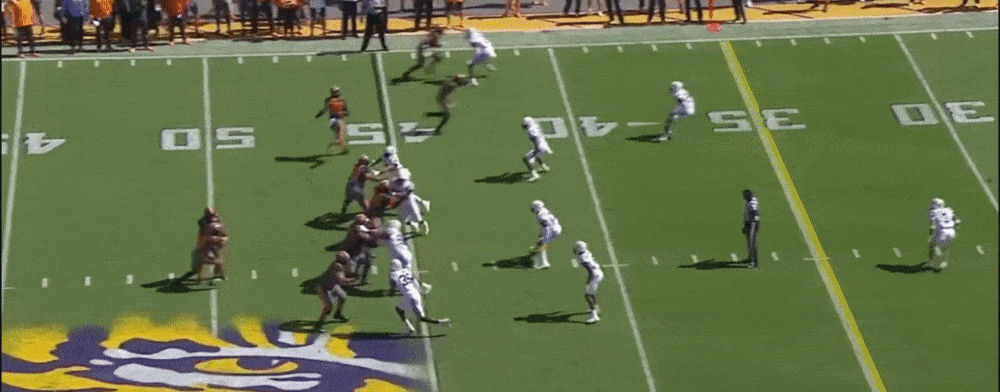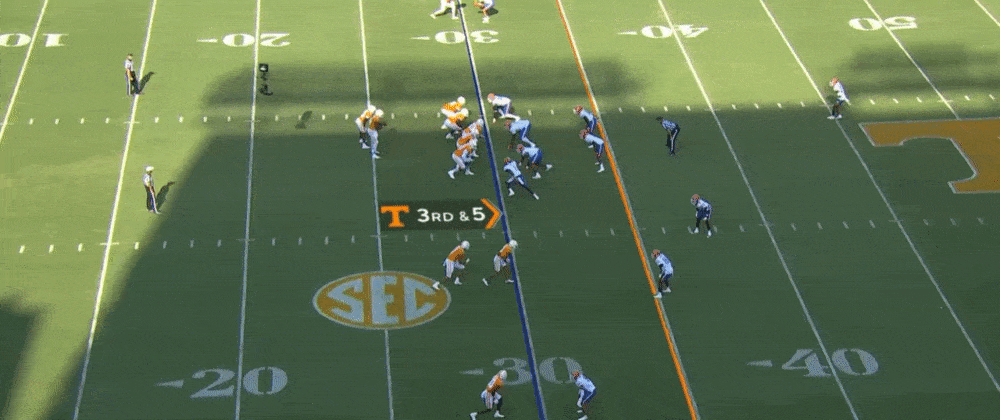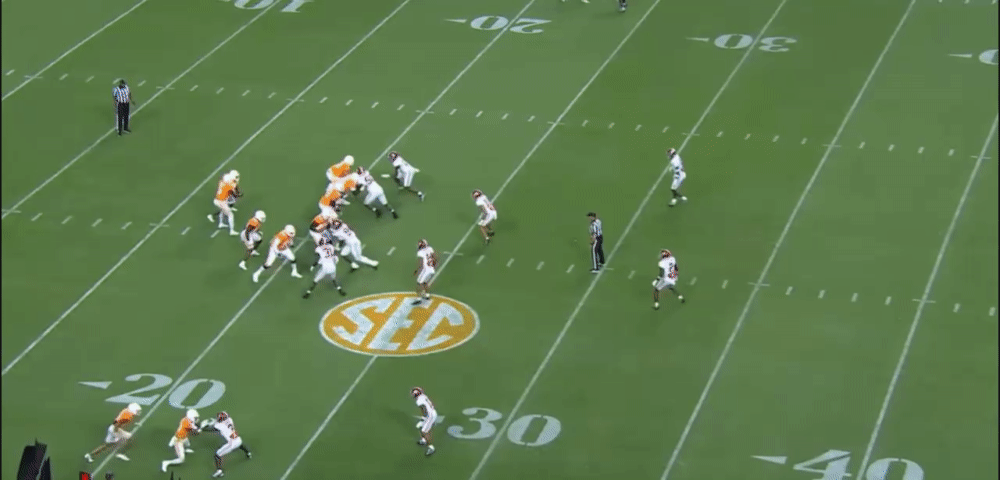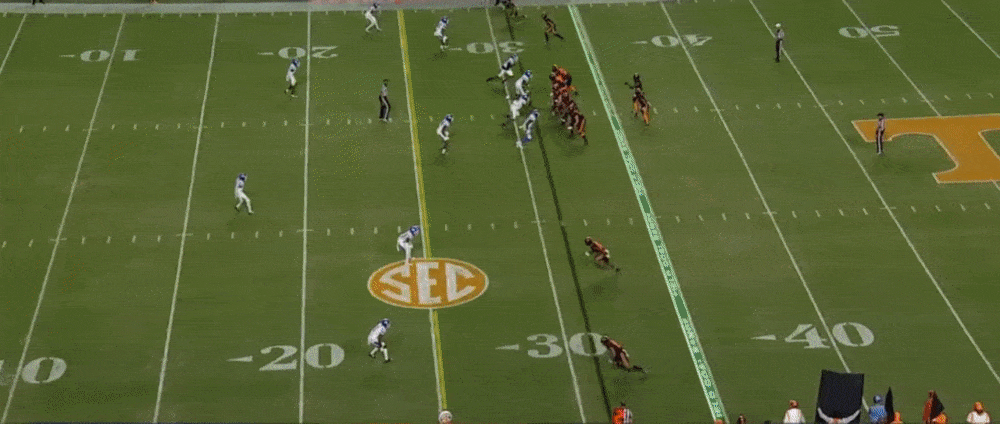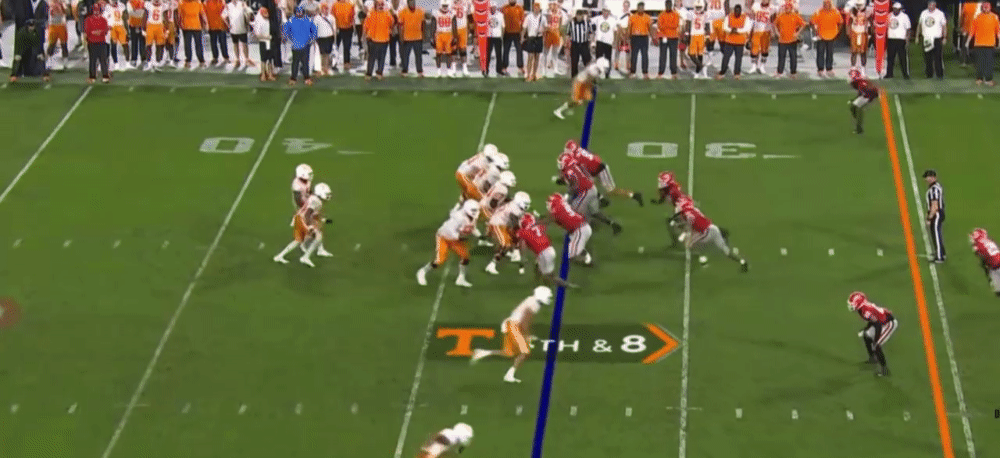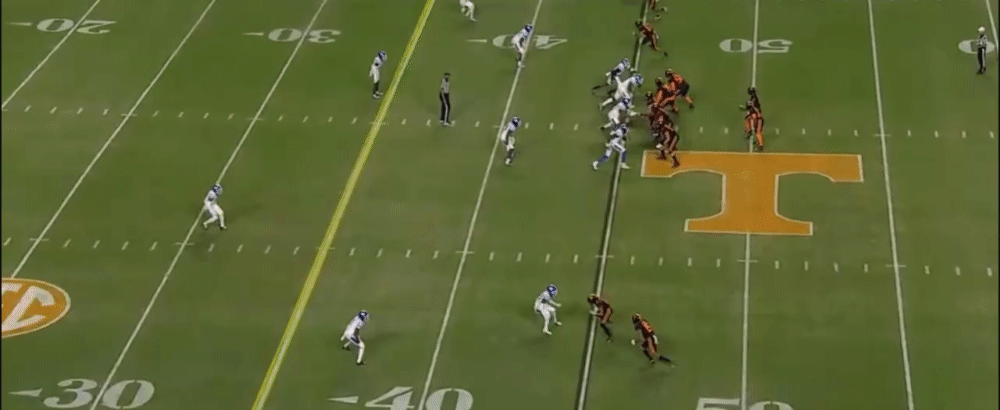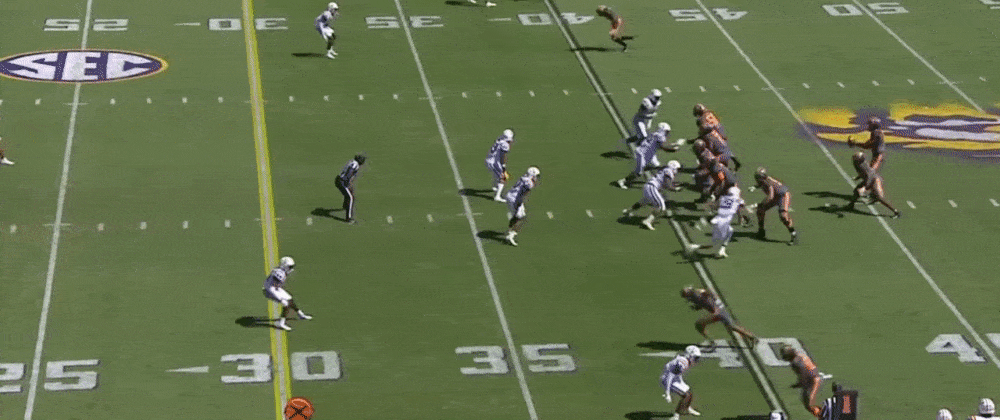Continuing our post-draft film study of the Detroit Lions’ draft class, today we’ll explore what quarterback and third-round selection Hendon Hooker brings to the table.
▶ Games watched: @Pittsburgh (Sept. 10), vs. Florida (Sept. 24), @LSU (Oct. 8), vs. Alabama (Oct. 15), @Georgia (Nov. 5), vs. Kentucky (Oct. 29)
▶ Statistics: 2018 (Virginia Tech): Six games, zero starts, zero pass attempts, four carries, 57 yards, one touchdown
2019 (Virginia Tech): 11 games, eights starts, 99-for-162 (61.1%), 1,555 yards, 13 touchdowns, two interceptions, 123 carries, 356 yards, five touchdowns
2020 (Virginia Tech): Eight games, seven starts, 98-for-150 (65.3%), 1,339 yards, nine touchdowns, five interceptions, 120 carries, 620 yards, nine touchdowns
2021: 13 games, 206-for-303 (68.0%), 2,945 yards, 31 touchdowns, three interceptions, 166 carries, 616 yards, five touchdowns
2022: 11 games, 229-for-329 (69.6%), 3,135 yards, 27 touchdowns, two interceptions, 104 carries, 430 yards, five touchdowns
▶ Athletic profile: Hooker did not participate in any pre-draft athletic testing while rehabbing from last season’s torn ACL. At 6-foot-3, 217 pounds with 10 1/2-inch hands, he checks the desired physical thresholds for the position.
▶ Durability: Hooker missed two games in 2020 while being evaluated for a post-COVID heart condition, and later that year experienced some in-game convulsions on the sideline he claimed were caused by medication related to that issue. Hooker started 24 consecutive games for Tennessee prior to tearing the ACL in his left knee on a designed run.
▶ Usage: Tennessee spreads the field with ultra-wide splits for their receivers, attacks with a blazing snap-to-snap tempo and largely kept Hooker in the shotgun, operating out of a single-step drop with a heavy dose of play-action (more than 50% of their pass plays).
On the vast majority of passing plays within the scheme, the quarterback was only required to read half the field and encouraged to use his legs if his primary options to that side were covered.
▶ Accuracy: The raw numbers are fantastic. Hooker completed 68.8% of his passes the past two seasons and had an adjusted accuracy of 75.9% when you factor in dropped passes and intentional throwaways. That ranked 22nd out of 82 qualified FBS quarterbacks last season.
The tape does show some inconsistent stretches in almost every game, particularly in the intermediate areas of the field, between 10 and 20 yards from the line of scrimmage, where Hooker’s throws tend to sail or end up wide of his target.
Where Hooker shines is his deep-ball accuracy. A huge component of the Volunteers’ offense, he attempted an SEC-high 68 passes of 20 or more yards beyond the line of scrimmage last season, connecting on 30. His adjusted accuracy on those throws (48.5%), ranked 11th in the country. Typically, when he missed, he was long, including overshooting an open target three times against Georgia.
Hooker also exhibits touch at all levels. He understands when he needs to fire a dart into a tight window or put some air under a throw to avoid an underneath defender or to allow his receiver to run under the ball, rarely opting for the incorrect pacing. The accuracy does slip slightly when utilizing touch.
▶ Anticipation: Hooker’s timing on his throws is well above average. The Tennessee offense is heavy on option routes for its receivers, so the quarterback is required to be on the same page with how his pass catchers are reading the defensive backs’ leverage.
Hooker times his throws well with the route breaks on comebacks and post patterns, leading his receiver to the spot. In man-coverage situations on deep sideline routes, the ball is out quickly, as the receiver draws even with the coverage, which limits the safety’s ability to provide over-the-top support.
▶ Arm strength: There’s zero question Hooker has the arm strength to make all the throws. Working across the middle of the field on slants and posts, he’s able to plant and drive his passes on a rope. And on the aforementioned deep balls, he’s able to effortlessly fling the ball 60-plus yards through the air with good trajectory and accuracy.
▶ Mechanics: There are a lot of positives to build off with Hooker’s fundamental base. He’s light on his feet and wastes little motion with his footwork, staying on his toes and routinely getting his body square with his intended target. He holds the ball high and has a smooth, consistent, over-the-shoulder delivery with a quick release and a clean follow-through.
▶ Field vision: Having to read only half the field helps, but Hooker processes what he needs to within that scope, resulting in consistently good decision-making and rarely putting the ball in jeopardy. He does a particularly good job gauging the safety’s positioning, identifying when he has a receiver isolated in man coverage for the deep shot.
Underneath, he almost always recognizes when a defender has dropped into an underneath passing lane and will wait for his target to clear into open space or pull the ball down and run.
▶ Pocket presence: Poise isn’t an issue. Hooker stands tall amidst chaos, remains calm and isn’t afraid to stand in and take an oncoming hit to deliver a pass.
But, he can be comfortable to a fault, holding on to the ball too long, allowing the pass rush get home. He ended up eating a sack nearly one out of every three times he was pressured (29.0%) last season, which was the third-worst rate among FBS quarterbacks. It’s inexplicable how rarely he throws the ball away, even in seemingly obvious situations.
Hooker does also present calmness in situational pressure. He took over at his own 32-yard line with 15 seconds remaining in the fourth quarter and connected on two big throws to put Tennessee in position for the game-winning field goal against Alabama.
Hooker is often slow to recognize the blitz, a process that needs to start before the snap. There were multiple instances where he was standing still, waiting for the play to develop and was unsuspectingly crushed from behind. That led to a few fumbles, highlighting one of the biggest flaws in his resume: Ball security. He fumbled more than 20 times in the past two seasons.
▶ Mobility: Beyond his overall accuracy, and ability to work the deeper parts of the field, Hooker’s mobility is a third high-end trait. His carries are split evenly between scrambles and designed runs. He can work in between the tackles, either on a designed draw or eluding pressure when the middle of the field has been vacated. He shows good lateral agility, burst and feel in tight quarters, finding holes to squeeze through into the second level.
When his legs carry him to the perimeter of the defense, whether on a designed rollout, a read-option or simply evading pressure, Hooker is a long strider who can outrun most front-seven defenders and get the edge. On any given carry, he’s a threat to gain 15 or more yards. At Tennessee, he was borderline automatic when keeping the ball in third-and-short situations.
Hooker is tough, regularly embracing contact and immediately popping back up after taking big hits. He hardly ever slides or runs out of bounds, which is something he’ll need to correct at the next level to maintain durability.
He would also benefit from being coached to keep his eyes downfield, continuing to look to make a play with his arm when rolling away from pressure. It’s likely Tennessee didn’t emphasize scramble rules within their scheme, given the simplified, half-field reads.
▶ Summary: Beyond his ongoing ACL recovery, Hooker doesn’t project as a prospect who would be immediately ready to lead an NFL offense. Even if he was healthy and had snuck into the first round of the draft, he is in need of time to develop behind an established NFL starter while he adjusts to the basic demands of a pro offense. That includes taking snaps under center, traditional three-, five- and seven-step drops and making full-field read progressions. He also would benefit from being taught to lean less on his mobility, including when to give up on a play, whether sliding at the end of a run or throwing a pass away when everything is covered up.
That said, there’s nothing in his skill set that suggests he would be unable to make the leap with a little seasoning. He’s a smart processor, safe with the football and has an outstanding mechanical base. His ball security, poise and mobility give him a floor as a high-end backup. And when you factor in the accuracy, particularly downfield, the ceiling is quite high.
With his frame, athleticism and calmness in the pocket, you can see similarities to Deshaun Watson, someone Hooker has said he models his game after.
jdrogers@detroitnews.com
Twitter: @Justin_Rogers




